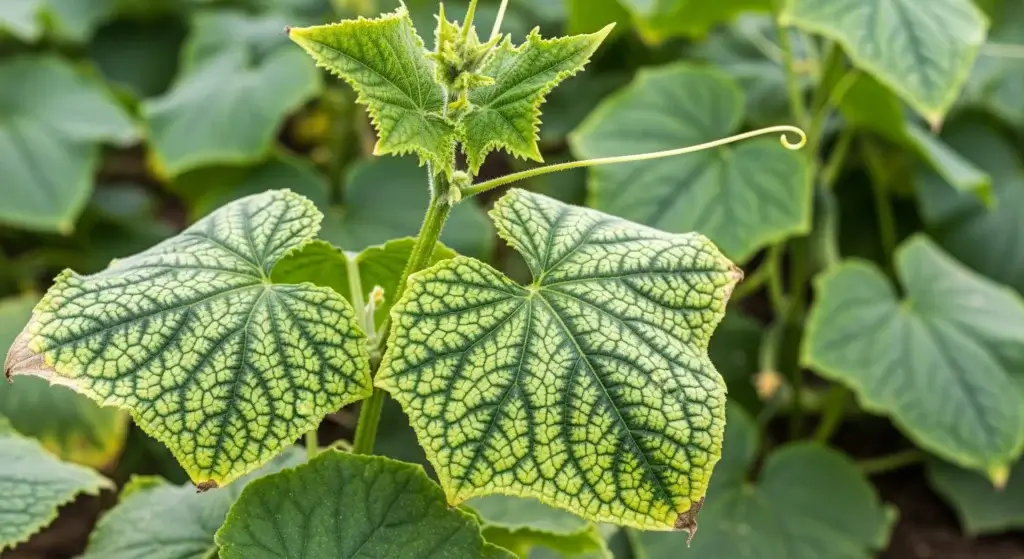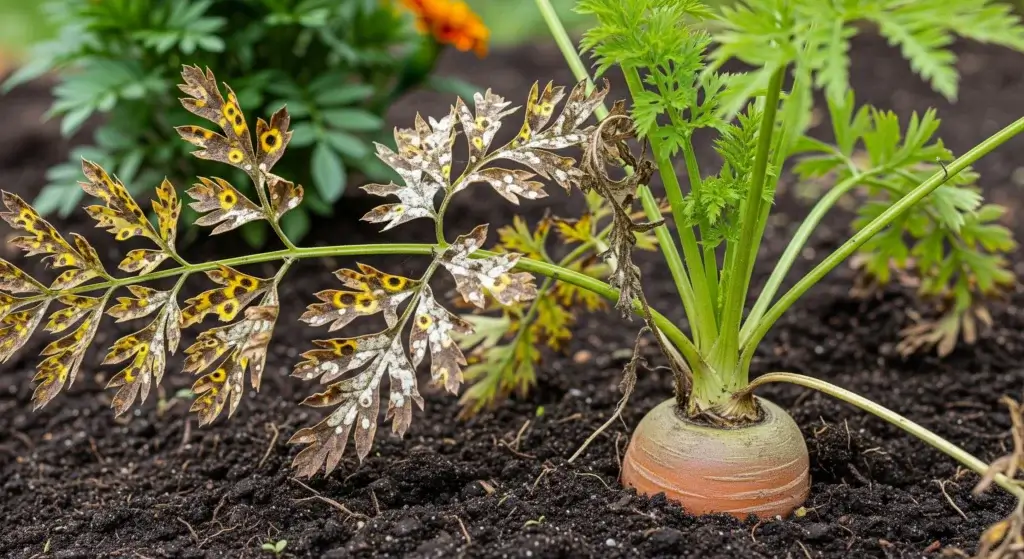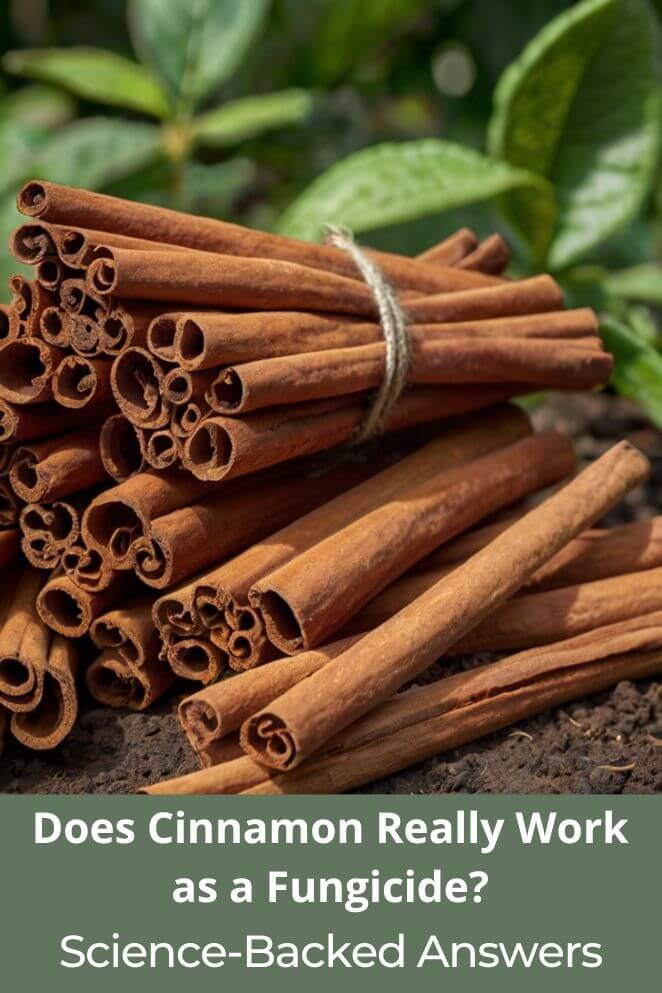
Cinnamon might be your go-to for spicing up French toast, but did you know it could also help your plants fight off nasty fungi?
Yep—this sweet-smelling kitchen staple might double as a natural antifungal superhero.
But is that just TikTok hype or actual science?
In this guide, we’re digging into the truth behind cinnamon’s powers.
You’ll learn what the research says, when it actually works, and how to use it in your garden without turning your flower bed into a spice rack.
If you’re all about plant care with a natural (and budget-friendly) twist, you’re in the right place.
Why the Buzz About Cinnamon as a Fungicide?
So, why all the hype about cinnamon being a plant lifesaver?
Well, cinnamon’s not just for your morning latte—it’s been used for centuries in traditional medicine because of its natural antifungal and antimicrobial powers.
Gardeners swear by it for all kinds of things, like:
- Stopping that nasty damping-off disease that can kill your baby seedlings.
- Treating those icky fungal infections on your houseplants.
- Protecting your fresh cuttings from rotting (because nobody wants a plant graveyard).
- Keeping mold and mildew out of your garden and indoor plants.
But are these claims legit, or just another garden rumor passed around like grandma’s secret recipe?
Let’s put cinnamon to the test and see what the science says!
- Read also: Spot the Difference: How to Identify Fungal vs Bacterial Plant Diseases
- Read also: Fusarium Wilt in Vegetables: Causes and Solutions
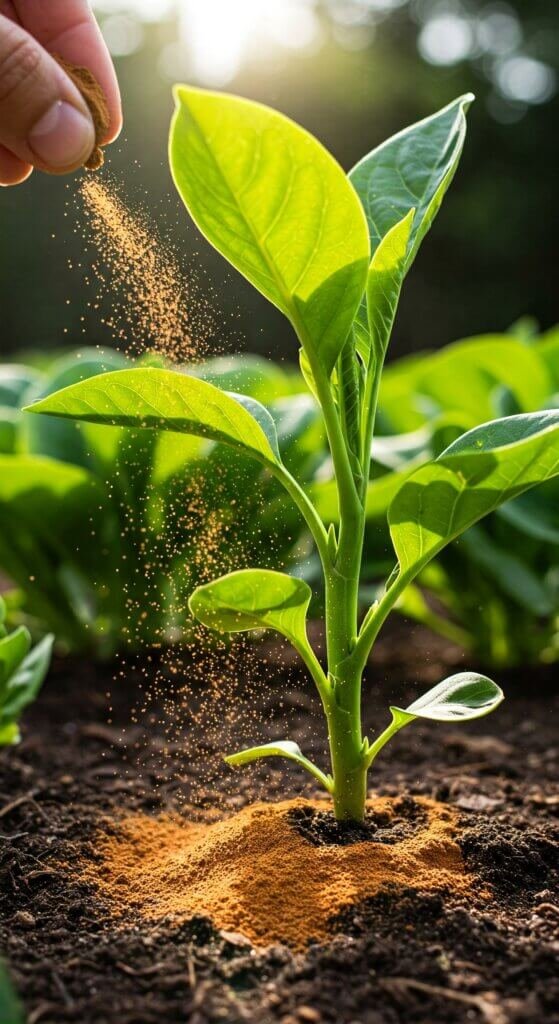
What Makes Cinnamon Antifungal?
So, what’s actually making cinnamon such a plant hero?
Let’s break it down:
Cinnamaldehyde
This is the stuff that gives cinnamon its signature “spicy goodness” and that warm, cozy smell you get when you walk into a bakery.
But it’s not just a nice scent—it’s the real deal when it comes to antifungal action.
It helps stop fungi from growing, like a plant bouncer kicking out unwanted guests.
Eugenol
You might recognize this one from clove oil, but it’s also in cinnamon!
Eugenol is like the ninja of antifungal agents—it’s stealthy and gets straight to the point, fighting off fungi and bacteria like a pro.
Tannins and flavonoids
These compounds are like the backup squad that helps take down the fungi.
They mess with the fungal cells, basically disrupting their life support system.
It’s like blocking the villain’s escape route in a movie.
A study published in Microbiological Research (2010) found that cinnamon oil was highly effective in inhibiting the growth of Candida species and other plant-pathogenic fungi.
What the Research Says: Scientific Evidence
Alright, let’s get into the nitty-gritty of what the science says about cinnamon’s plant-saving powers:
Effective against soil-borne fungi
In 2016, a study published in the Journal of Essential Oil Research found that cinnamon essential oil went full-on superhero mode against Fusarium, a fungus that causes root rot and damping-off disease in plants.
Basically, cinnamon oil swooped in and stopped the fungus from spreading like a plant-saving Avengers team.
Slows down mold growth
Another study, published in Food Control (2012), showed that cinnamon oil slowed down the growth of Aspergillus flavus—a sneaky mold that not only contaminates food but also produces mycotoxins, which are no joke.
Cinnamon gave that mold a serious reality check, preventing it from doing more damage.
Oil or extract is where the magic happens
Most of the research shows that cinnamon oil or ethanol-based extracts are the real MVPs when it comes to fighting fungi.
Powdered cinnamon? Not so much.
Think of it like the difference between trying to stop a villain with a squirt gun versus a fully loaded laser cannon.
You need the concentrated stuff for maximum results!
Pro tip: While cinnamon shows antifungal promise, the actual results can vary depending on the type of fungus, the form of cinnamon, and how much you use. So, it’s like finding the right potion in a game—timing, ingredients, and dosage matter!
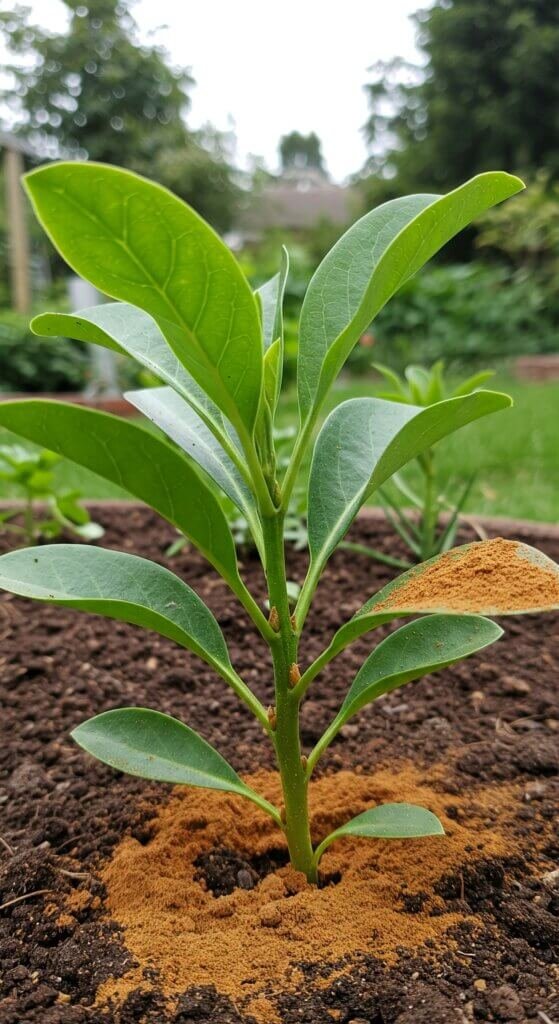
How to Use Cinnamon as a Natural Fungicide
Ready to give cinnamon a shot in your garden? It’s like having a natural fungicide that’s also a pantry staple.
Here’s how to use cinnamon to keep those pesky fungi at bay:
1. Preventing damping-off in seedlings
Damping-off is the villain that takes down your young plants before they even get a chance to thrive.
DIY method:
Just sprinkle a little powdered cinnamon on the surface of the soil around your seedlings. It’s like giving them a fungal force field.
Why it works:
Cinnamon helps to reduce fungal spores on the surface and keeps the topsoil nice and dry.
Plus, it’s a ninja against fungus gnat larvae, which are notorious for making seedlings their snack.
2. Healing plant wounds and cuttings
Plant cuts are like open wounds, and fungi love to sneak in and cause trouble.
But fear not—cinnamon’s got your back.
DIY method:
Before you plant a cutting, dip the cut end into some powdered cinnamon.
For pruning wounds, dust a little on the exposed area.
Why it works:
Cinnamon forms a natural seal over the wound, stopping fungi from swooping in and causing infection.
Think of it as a protective band-aid for plants.
3. Cinnamon oil spray for fungus control
Fungus on your plants’ leaves or stems? Time for a cinnamon-powered rescue mission!
DIY cinnamon spray:
Mix 10-15 drops of cinnamon essential oil with 1 liter of water.
Add a few drops of dish soap to help the oil blend in.
Then, spray it lightly on your infected plants.
Precautions:
Always test the spray on a small leaf before going full-on spray mode.
And avoid direct sun after application because, like a bad sunburn, the oil can cause some leaf damage.
4. Soil Treatment
If you’re starting fresh, cinnamon can help you set the stage for fungal-free soil.
DIY method:
Mix 1-2 tablespoons of cinnamon powder into a gallon of soil. Stir it up and let it sit for about 24 hours before using it.
Why it works:
Cinnamon’s antifungal power gets to work right from the start, creating a less inviting environment for fungi to grow in your soil.
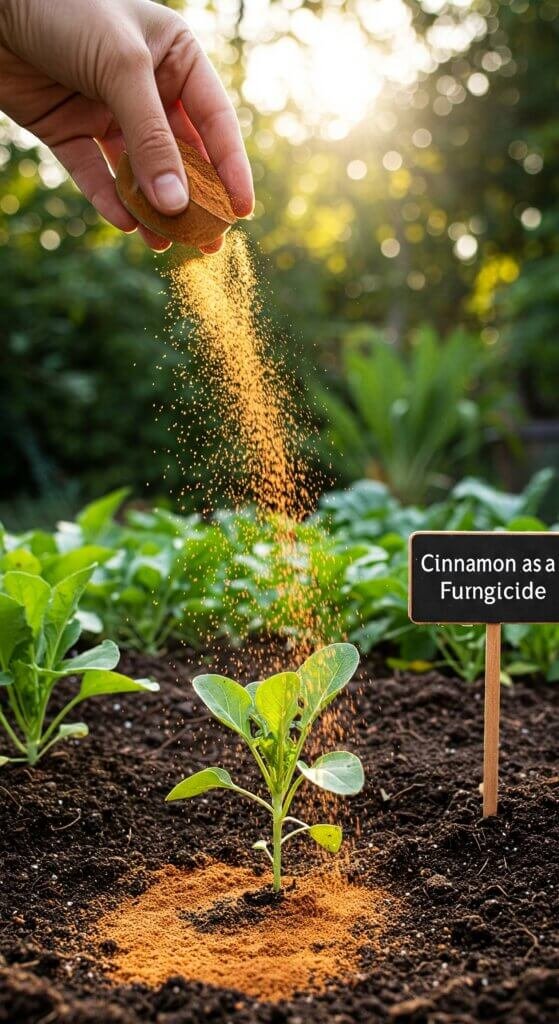
When Cinnamon Doesn’t Work
Cinnamon may be a powerhouse in the spice world, but even it has its limits in the garden.
Here’s when cinnamon’s antifungal powers might fall short:
Not a cure-all
While cinnamon can work wonders as a preventative, it’s not the superhero that can swoop in and save the day if your plant is already dealing with serious issues like powdery mildew or downy mildew.
It’s like putting a band-aid on a broken leg—it might help, but it’s not going to fix the bigger problem.
Less effective than commercial fungicides
Cinnamon is awesome for tackling minor, early fungal problems, but when it comes to full-blown fungal invasions or large-scale farming, commercial fungicides are still the heavy hitters.
It’s like trying to fight a dragon with a slingshot—it’s cute, but not quite up to the task.
Powder form is less potent
If you’re just grabbing cinnamon from your spice rack, you’re using the less powerful form.
Research shows that cinnamon oil or extract packs a much stronger antifungal punch than the powdered version you sprinkle on your oatmeal.
So, while it’s still helpful, it’s like using a squirt gun when you really need a fire hose.
Pros and Cons of Using Cinnamon as a Fungicide
| Pros | Cons |
| Natural and eco-friendly |
Less potent than chemical fungicides
|
| Safe for kids and pets |
Powdered form is not as effective
|
| Inexpensive and readily available |
Needs frequent reapplication
|
| Mild insect-repelling qualities |
Can cause phytotoxicity in high doses
|
Cinnamon vs. Other Natural Fungicides
Here’s how cinnamon stacks up against other popular natural antifungal options:
| Natural Fungicide | Antifungal Strength | Common Use |
| Cinnamon | Moderate |
Seedlings, cuttings
|
| Neem Oil | High |
Broad-spectrum pest and fungus control
|
| Baking Soda Spray | Moderate |
Powdery mildew prevention
|
| Garlic Extract | High |
Soil-borne and foliar fungi
|
| Chamomile Tea | Mild |
Seed-starting fungicide
|
Use cinnamon in combination with other natural remedies for better results.
- Read also: Beyond Pesticides: The Importance of Integrated Pest Management
- Read also: The Natural Solution: How Diatomaceous Earth Works as a Pesticide
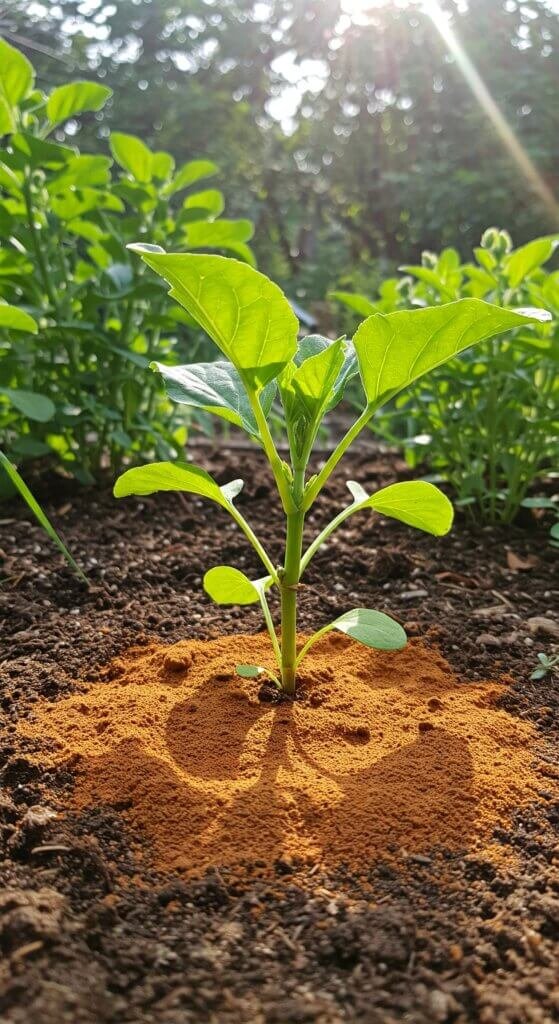
Frequently Asked Questions
Generally, yes—but test first. Some sensitive plants may react poorly to essential oils.
Yes, but it’s less potent than essential oil or extract. Great for topsoil and cuttings, not as effective for spraying.
Apply cinnamon once a week or after watering for best results.
In moderate amounts, cinnamon is unlikely to harm beneficial soil life. Excessive use, especially oils, might disrupt microbial balance.
Final Verdict: Does Cinnamon Really Work as a Fungicide?
Cinnamon, especially in essential oil form, does have real antifungal powers, as shown by both science and gardeners’ stories.
It’s a solid, natural option for preventing minor fungal issues without the harsh chemicals.
But let’s be clear—it’s not a magic bullet.
Cinnamon won’t save your garden from every fungal problem out there, especially the big, nasty ones.
However, it’s a handy tool in your organic gardening toolbox—perfect for tackling smaller issues or for when you want to keep things natural.
Just don’t forget to pair it with other remedies for a superhero-level defense against fungus.
Think of it as the Robin to your Batman, not the whole crime-fighting squad.

